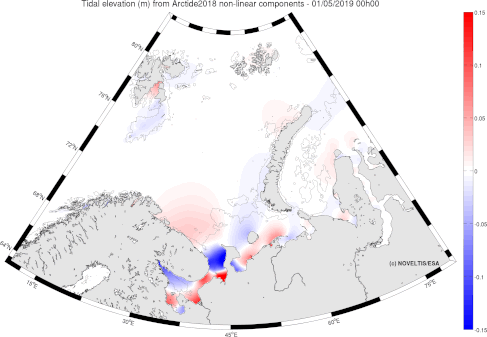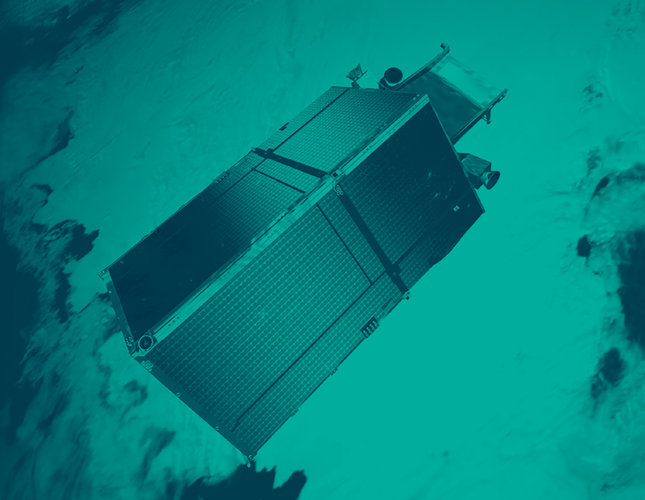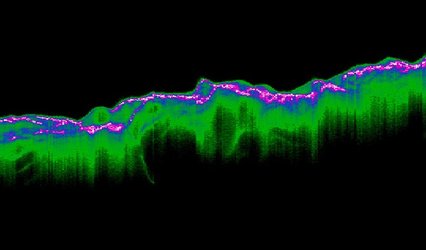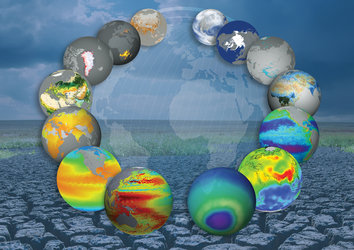CryoSat still cool at 10
Today marks 10 years since a Dnepr rocket blasted off from an underground silo in the remote desert steppe of Kazakhstan, launching one of ESA’s most remarkable Earth-observing satellites into orbit. Tucked safely within the rocket fairing, CryoSat had a tough job ahead: to measure variations in the height of Earth’s ice and reveal how climate change is affecting the polar regions. Carrying novel technology, this extraordinary mission has led to a wealth of scientific discoveries that go far beyond its primary objectives to measure polar ice. And, even at 10 years old, this incredible mission continues to surpass expectations.
The launch of a satellite is always a time to hold your breath, but CryoSat’s liftoff on 8 April 2010 was arguably more tense than most as it came less than five years after the original satellite was lost owing to a rocket malfunction.

So important was the need to understand what was happening to Earth’s ice, the decision to rebuild was taken quickly – and thankfully, this day 10 years ago heralded the beginning of a mission that was set to advance polar science like no other.
While other satellite missions can measure changes in the extent of Earth’s ice, CryoSat completes the picture by recording changes in ice height, which are used to work out changes in thickness and volume – key to understanding the total amount of ice loss.
CryoSat was designed to observe two types of ice: the vast ice sheets of Antarctica and Greenland that rest on land, and the sea ice floating in the polar oceans.
Not only do these two forms of ice have different consequences for our planet and climate, but they also pose different challenges when trying to measure their thickness.
To do this, CryoSat carries the first spaceborne synthetic aperture interferometric radar altimeter, a sensor optimised to detect sea-ice floes as they drift in the ocean and to study the rugged glaciers that drain the polar ice sheets.
In addition, CryoSat’s orbit reaches latitudes of 88° North and South, which takes it closer to the poles than all previous polar-orbiting altimetry satellites.
ESA’s Director of Earth Observation Programmes, Josef Aschbacher, said, “CryoSat is the epitome of an ESA Earth Explorer. It uses completely new technology to fill gaps in our scientific knowledge. The issue of diminishing ice linked to climate change is a real concern, and over the last 10 years this mission has been a game changer.


Access the video
“For example, CryoSat has contributed to the recent worrying findings that Greenland and Antarctica are losing ice six times faster than in the 1990s, which has clear implications for future sea-level rise. Information such as this is vital for international policy making in responding to climate change.”
Andrew Shepherd from the University of Leeds, UK, added, “CryoSat’s contribution to polar science is truly astonishing. Not only do we now have a clear picture of how much ice Earth is losing, but its measurements have helped to improve the models we use to predict future climate change – information that is critical for society to adapt.”
CryoSat has also revealed how the world’s 200 000 mountain glaciers have succumbed to climate change, thanks to advanced swath processing of its radar measurements, which allows small regions to be mapped in fine detail. This new technique takes the mission beyond its brief to study polar ice alone.

Although changes in sea ice do not affect sea level directly because it is afloat, it plays a central role in the global climate system as it reflects solar radiation back into space, and because it moderates ocean heat transport around the planet by insulating the relatively warm water from the cold polar air. CryoSat has been instrumental in mapping changes in the thickness and volume of Arctic sea ice.
Prof. Shepherd added, “Despite the long-term decline in the extent of Arctic sea ice, there have been significant year-to-year fluctuations in its thickness, and its volume has fallen in only seven of the past 10 years. But even with a decade of CryoSat measurements, the seasonal cycle of sea-ice growth and decay is still too large to confidently detect a long-term trend in volume, and so continued observation is essential.
As well as fulfilling its primary role as a polar ice mission, CryoSat’s measurements have been put to good use in a wide range of alternative and innovative applications. During the winter, CryoSat has been able to record changes in the thickness of ice on lakes, and in the summer it has been used to monitor lake and river water levels across the globe – information that is important for travel and fishing, for example.
CryoSat’s measurements are now an important reference of global sea level in the polar regions and beyond, thanks to its high-inclination orbit and long-repeat cycle, allowing scientists to refine the long-term trend and to detect short-term fluctuations associated with ocean dynamics.

And, it has even revealed what lies beneath the ocean surface thanks to its ability to detect tiny changes in marine gravity, which reflect the shape of the sea bed. CryoSat’s bathymetric charts are now an important tool for studying ocean dynamics, currents and tides, as well as for ship safety.
ESA’s CryoSat Mission Manager, Tommaso Parrinello, said, “These are just some of CryoSat’s outstanding results and the mission is still going strong, but we will focus more on this at the CryoSat anniversary conference, which we’ve had to postpone until October because of the COVID-19 pandemic. In the meantime, however, I cannot praise the mission and all the people who have worked on it enough.”
ESA’s Mark Drinkwater added, “Indeed, CryoSat is still giving us incredible data to advance science, and with its new synthetic aperture radar and interferometric capabilities it has also laid the foundation for the Copernicus Polar Ice and Snow Topography Altimeter (CRISTAL) operational mission, which we are now developing on behalf of the ESA Member States and the European Commission.”
CRISTAL will fill the recognised gap in sustained long-term monitoring of polar ice variability for the Copernicus Climate Change Service and Copernicus Marine Environment Monitoring Service, maritime security and international ice charting, and in support of the EU Integrated Arctic Policy and commitments to the Paris Agreement and Green New Deal.














 Germany
Germany
 Austria
Austria
 Belgium
Belgium
 Denmark
Denmark
 Spain
Spain
 Estonia
Estonia
 Finland
Finland
 France
France
 Greece
Greece
 Hungary
Hungary
 Ireland
Ireland
 Italy
Italy
 Luxembourg
Luxembourg
 Norway
Norway
 The Netherlands
The Netherlands
 Poland
Poland
 Portugal
Portugal
 Czechia
Czechia
 Romania
Romania
 United Kingdom
United Kingdom
 Slovenia
Slovenia
 Sweden
Sweden
 Switzerland
Switzerland




































